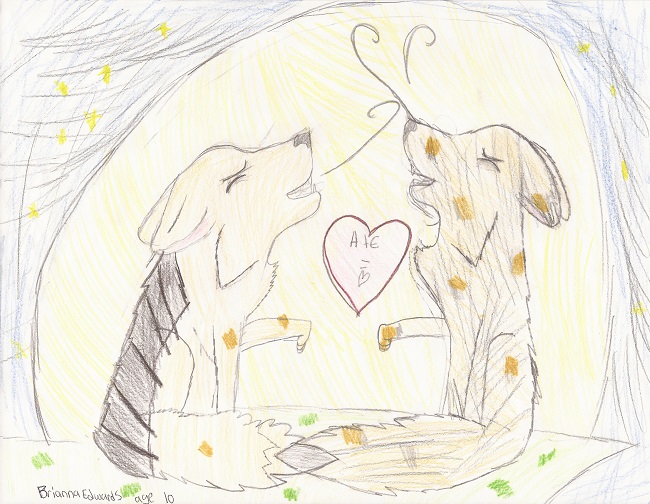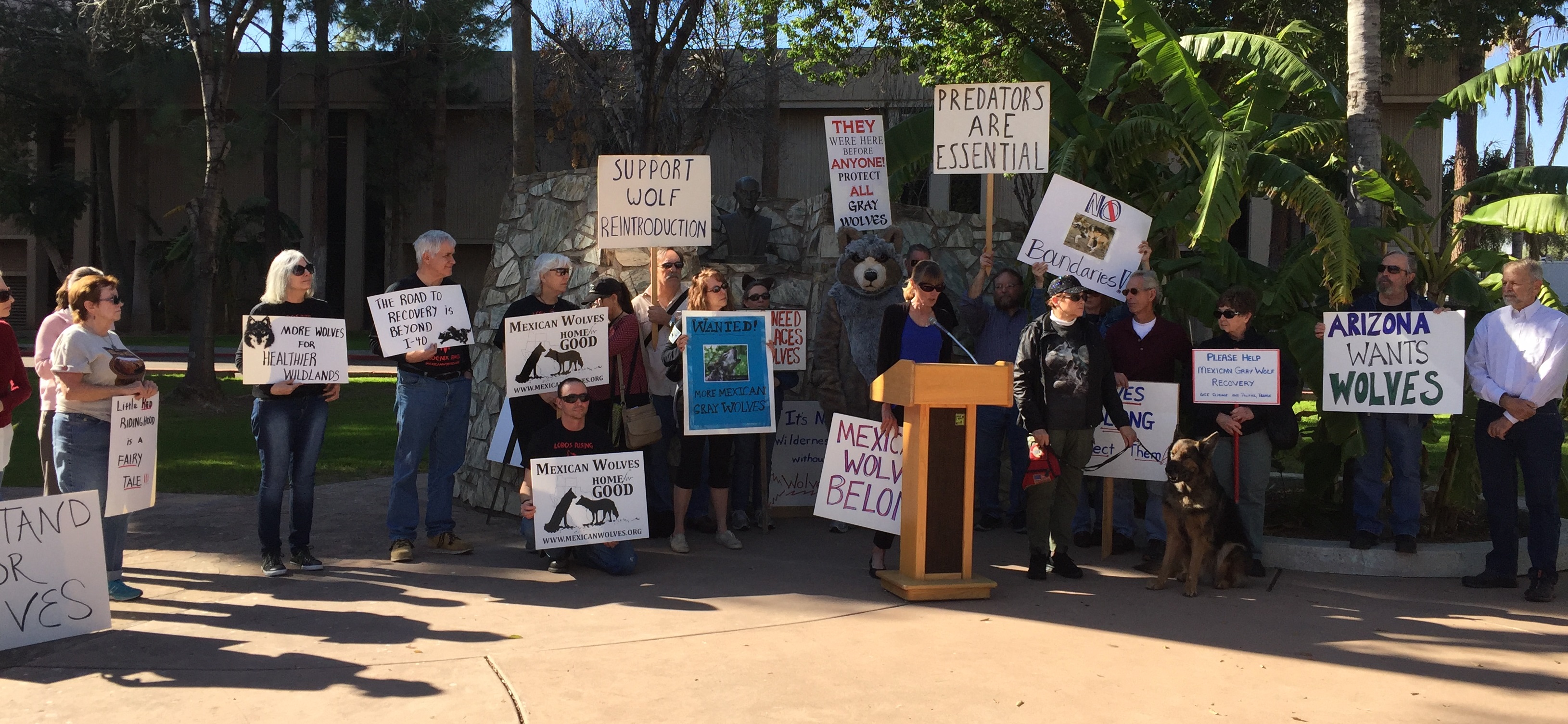 “The wolves are not fully recovered, but that’s what we howl for.”
“The wolves are not fully recovered, but that’s what we howl for.”
Brianna Edwards, 11 years old, wants to see wolves fully recovered in the Grand Canyon region. She hopes that the next generation of children can hear the howl of wolves in the wild in northern Arizona.
We agree wholeheartedly with Brianna and know that you do, too! Thank you for all of your past support. Without you, we couldn’t do what must be done to ensure the wolves’ existence long into the future.
We envision a future where a thriving and growing population of wild wolves roam freely and safely across the region’s healthy landscape. Grand Canyon Wolf Recovery Project (GCWRP) is committed to our shared dream, no matter what the charged and changed political landscape of 2017 may bring to Mexican wolf recovery.
Now more than ever we need to join forces to protect what we love and value most and safeguard those that cannot protect themselves. We know that you love the wolves as much as we do, so please help them today by making a generous gift.
Let’s be candid, in 2017 we anticipate increased challenges to the release and return of wolves to the Grand Canyon region. One of the major threats could be congressional gutting of the Endangered Species Act.
While there’s a lot we don’t know about what 2017 will bring for the wolves, we do know that the U.S. Fish & Wildlife Service (USFWS) will be releasing the Mexican wolf recovery plan in November 2017. We strongly believe that rigorous, peer-reviewed science should be the basis for the plan. We will double down our efforts to ensure that the USFWS follows the best available science to identify the Grand Canyon region as an important recovery area for Mexican wolves.
We worked harder than ever in 2016 to build support for wolves in the region. Here are some of the ways we engaged our community and advocated for wolves:
• Reached over 12,000 people through wolf outreach events including Pets in the Pines, Hullabaloo, Coconino Humane anniversary event, Flagstaff Earth Day, Arboretum Opening Day, the North Rim of the Grand Canyon, our Big Lake Howliday Camp out, and Arizona Trails Day.
• Provided wolf education programs and outreach to visitors at the Museum of Northern Arizona and The Arboretum at Flagstaff.
• Supporters had twenty-three letters to the editor, editorials, op-eds, radio interviews and other media hits on wolf recovery issues published in regional media, including an op-ed by GCWRP’s staff in the Arizona Daily Sun.
• Collected signatures of support from businesses in the Grand Canyon region on a letter to the USFWS for wolf recovery in the region for both the ecological and economic benefits wolves could provide.
In 2017 it’s more important than ever to rally diverse community members to stand up and speak for the wolves. We must work hard to ensure the U.S. Fish & Wildlife Service follows the very best-available science to identify the Grand Canyon region as an important recovery area for Mexican wolves and help people understand that the threats to the region’s ecosystems and to the long-term viability of the Mexican gray wolf are staggering.

Advocacy and mobilization of citizens concerned with wolf recovery are, indeed, critical to the survival of this species. GCWRP is helping the public to stand up and speak out for these majestic animals. Our “Packtivist” volunteers are trained, on-the-ground volunteer wolf advocates who take action by writing letters-to-the-editor, contacting agency and elected officials, attending and speaking at public meetings and rallies, and submitting public comments.
And don’t forget that Grand Canyon Wolf Recovery Project is the only organization doing on-the-ground advocacy for healthy populations of Mexican gray wolves in the region and the only organization in Arizona solely focused on Mexican gray wolf recovery. This is why your support is crucial right now.
Honestly, we’re so busy working to protect and advocate for wolves, we haven’t taken much time to ask for your financial support. But now we really need you. The threats are greater than ever. Wolf recovery in the Grand Canyon region depends on you, so please give today. We promise that every dollar is used wisely to help the wolves.
We really need to raise $12,000 by the end of the year so that we can broaden and continue our work in the community as we prepare for the release of the wolf recovery plan and the new political challenges and realities in 2017. We must recruit new wolf advocates by showing them the science, and inspiring and mobilizing their support to tell our politicians what we know — that 81% of Arizona voters already support wolf recovery throughout the Grand Canyon region.
Here’s what your generous support will enable us to accomplish together:
• Mobilize hundreds of citizens to speak out on behalf of the wolves.
• Support our successful and established Packtivist group, the Grand Canyon Pack, with training events and meetings.
• Increase support of our new Packtivist group, Zion for the Wolves Pack, in Southwest Utah and the Arizona Strip.
• Energize and support the White Mountains Pack in Arizona.
• Build support with local businesses and private landowners for wolf recovery and wolf-related tourism.
• Educate visitors at the north and south rims of the Grand Canyon. Rim country is ideal wolf habitat and the Grand Canyon National Park could become a more complete and healthy ecosystem with healthy populations of wolves.
• Watchdog the health of wild fostered and wild born pups.
• Pressure the U.S. Fish and Wildlife Service to release bonded wolf parents with pups.
We hope you can see how much we can accomplish with the money we raise. Please know that no matter how large or small your gift, it really will make a difference to the magnificent wolves that we work tirelessly to protect. They need your support today. Together, we can face the challenges to ensure that Brianna’s dream comes true, that wolves regain their rightful place in the healthy landscapes of the Grand Canyon region.
Many thanks,
Emily Renn, Executive Director





